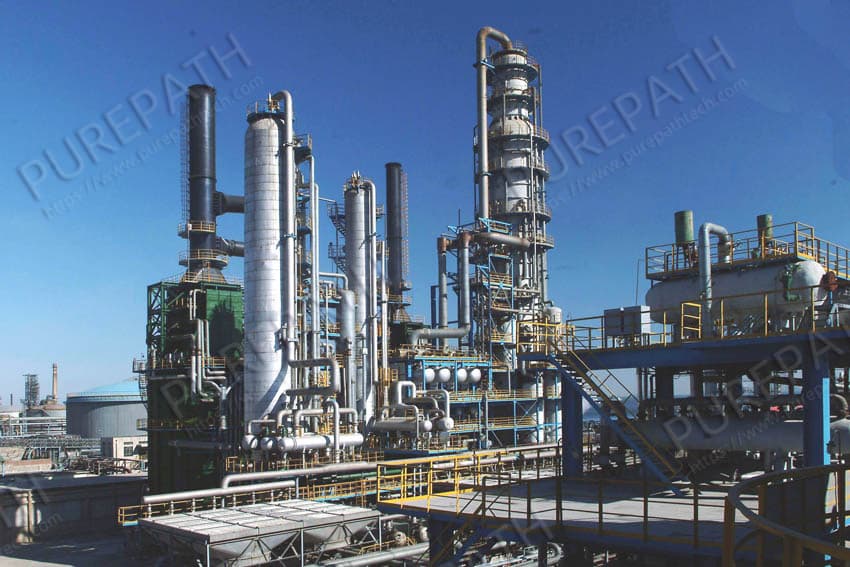Let’s explore how crude oil is distilled and turned into the products we use every day.
What Is Crude Oil Made Of?
Crude oil is a thick, dark liquid composed of a mixture of hydrocarbons — molecules made of hydrogen and carbon — as well as small amounts of sulfur, nitrogen, and oxygen. These hydrocarbons vary in size and complexity, and each one has a different boiling point.
The Process of Distillation
The distillation of crude oil happens in a facility called an oil refinery, using a method known as fractional distillation.
Here’s how it works:
Heating the Crude Oil
The crude oil is first heated in a furnace to about 350–400°C. This causes most of the oil to vaporize.
Entering the Distillation Column
The hot vapor is pumped into a tall tower called a fractionating column. This column is cooler at the top and hotter at the bottom, creating a temperature gradient.
Separation into Fractions
As the vapor rises through the column, different hydrocarbons condense at different levels based on their boiling points:
- Light fractions(like gases and petrol) rise to the top and condense at cooler temperatures.
- Medium fractions(like kerosene and diesel) condense in the middle.
- Heavy fractions(like lubricating oil and bitumen) stay near the bottom.
Each level of the column collects a different "fraction" of the oil — hence the name fractional distillation.
What Products Do We Get?
Here's a quick look at the products from distillation and how they’re used:
| Fraction | Boiling Range | Uses |
| Refinery gases | < 20°C | Cooking gas, LPG |
| Petrol (gasoline) | 40–100°C | Car fuel |
| Naphtha | 100–160°C | Plastics, chemicals |
| Kerosene | 160–250°C | Jet fuel, heating |
| Diesel | 250–320°C | Trucks, buses, generators |
| Lubricating oils | 320–400°C | Engine oil, waxes |
| Bitumen | > 400°C | Road surfacing, roofing |
Why Is Distillation Important?
Without distillation, crude oil would remain a useless mix of substances. Fractional distillation makes it possible to extract specific products for transportation, manufacturing, energy, and more. It’s the first and most essential step in turning crude oil into usable fuel and materials.
Final Thoughts
Distilling crude oil is a powerful example of how science and engineering turn natural resources into everyday essentials. From powering your car to heating your home, nearly every drop of oil goes through this critical process before it reaches you.
